Shio Kombu combines the umami of kombu with a mildly salty flavor, making it addictive. It is not only a perfect accompaniment to rice but can also be used for various purposes, such as seasoning stir-fries or salads.
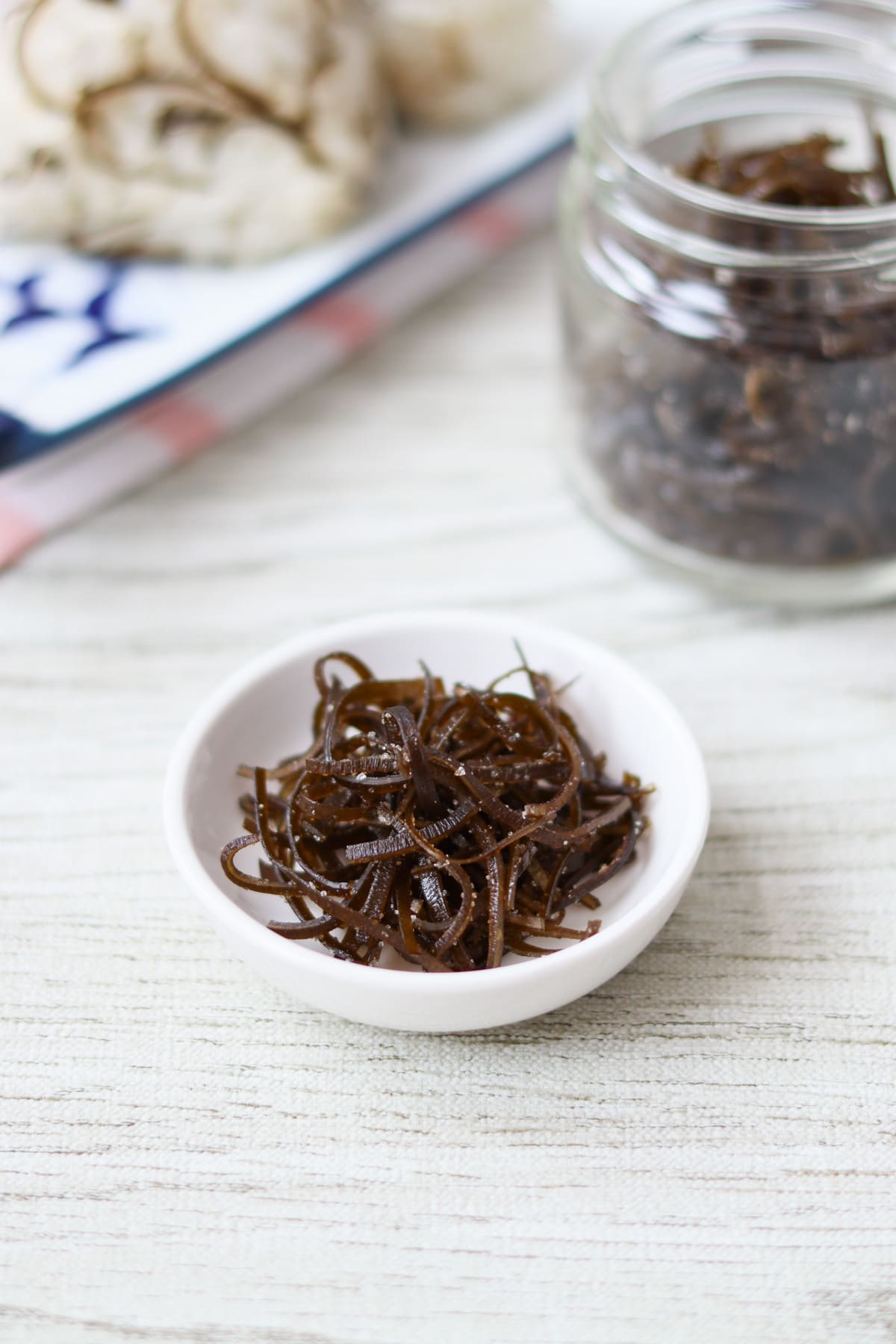
Jump to:
What is Shio Kombu?
Shio Kombu is a type of food made by simmering thinly sliced or cubed kombu in Japanese seasonings such as mirin and soy sauce, and then drying it. "Shio" means salt, and "Kombu" refers to kelp, so this food is called "Shio Kombu" because it is coated with salt during the preparation process, and the condensed umami components of the kombu appear as white salt crystals on the surface.
To make this food, kombu that has already been used to make dashi stock can be utilized, making it a perfect way to reuse kombu. However, kombu used for dashi can spoil quickly, so it is recommended to either use it immediately after making dashi or use the frozen kombu that was saved for this purpose after thawing.
In Japan, it is often used as an accompaniment for rice or onigiri (rice balls). It is also a versatile ingredient that can be used in stir-fries and salads.
By the way, there is also something called "shio kombu," which is simply simmered kombu sprinkled with salt. However, it is different from what is described in this recipe.
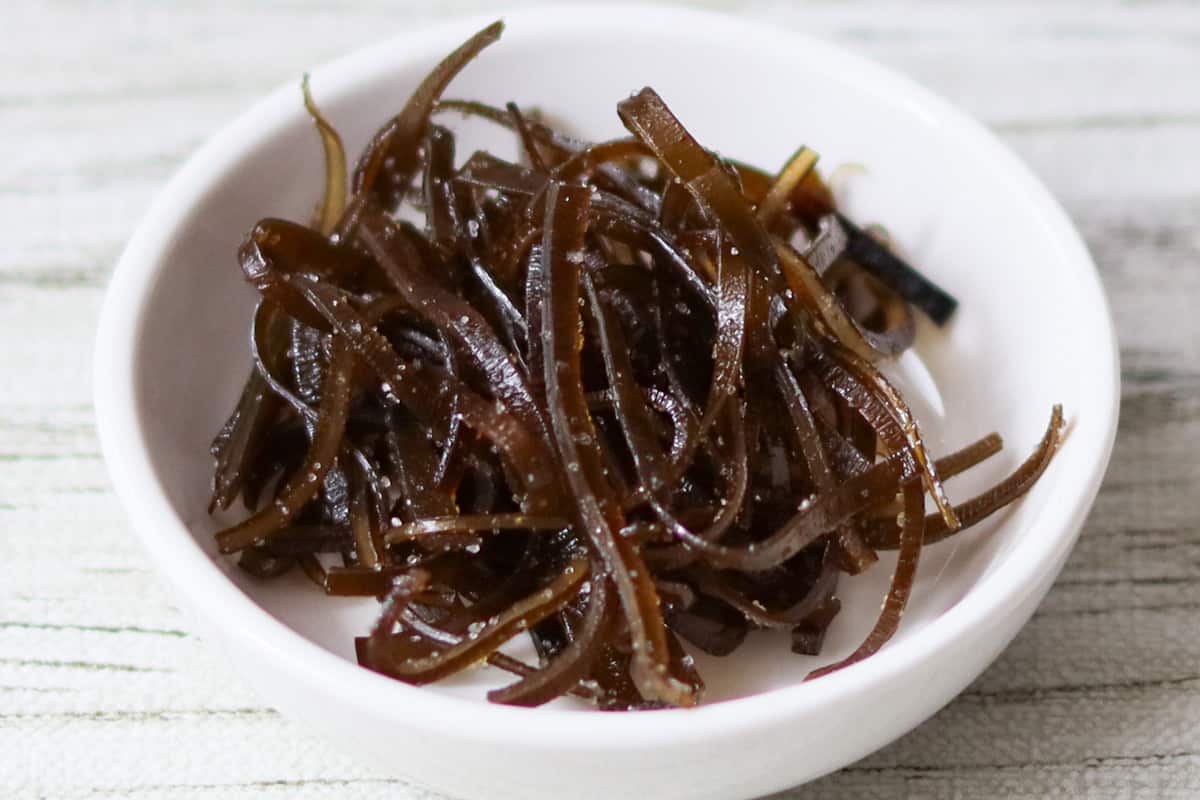
Differences from Kombu Tsukudani
If you are well-versed in Japanese cuisine, you might recognize this food as "Kombu Tsukudani." To some extent, that is accurate: shio kombu is, broadly speaking, a type of tsukudani. Kombu tsukudani is a dish made by cooking kombu with soy sauce, sugar, and other seasonings until the cooking liquid has almost entirely evaporated.
The difference between shio kombu and kombu tsukudani lies in their preparation methods. Shio kombu is simmered using just enough seasoning liquid for the kombu to absorb, while kombu tsukudani is simmered with more seasoning liquid than the kombu can absorb.
This distinction results in a noticeable contrast between the two. Shio kombu combines the rich umami of the kombu with a mild flavor. On the other hand, kombu tsukudani boasts an intense flavor due to the abundant seasoning liquid.
Both are renowned dishes in Japan, so I encourage you to give them a try and experience the contrast for yourself.
Key considerations for ingredients
To enhance the flavor of shio kombu, it is important to use the proper ingredients. The key components to focus on are kombu, salt, and sugar.
When it comes to kombu, it is recommended to use thinner pieces. Commonly available kombu used for making dashi stock works well, but if you typically opt for high-quality thick kombu, it might not be suitable for this dish. Thicker kombu will result in a firmer texture.
The salt and sugar used for the finishing touch should be in fine or powdered form. This allows you to season the kombu without compromising its texture.
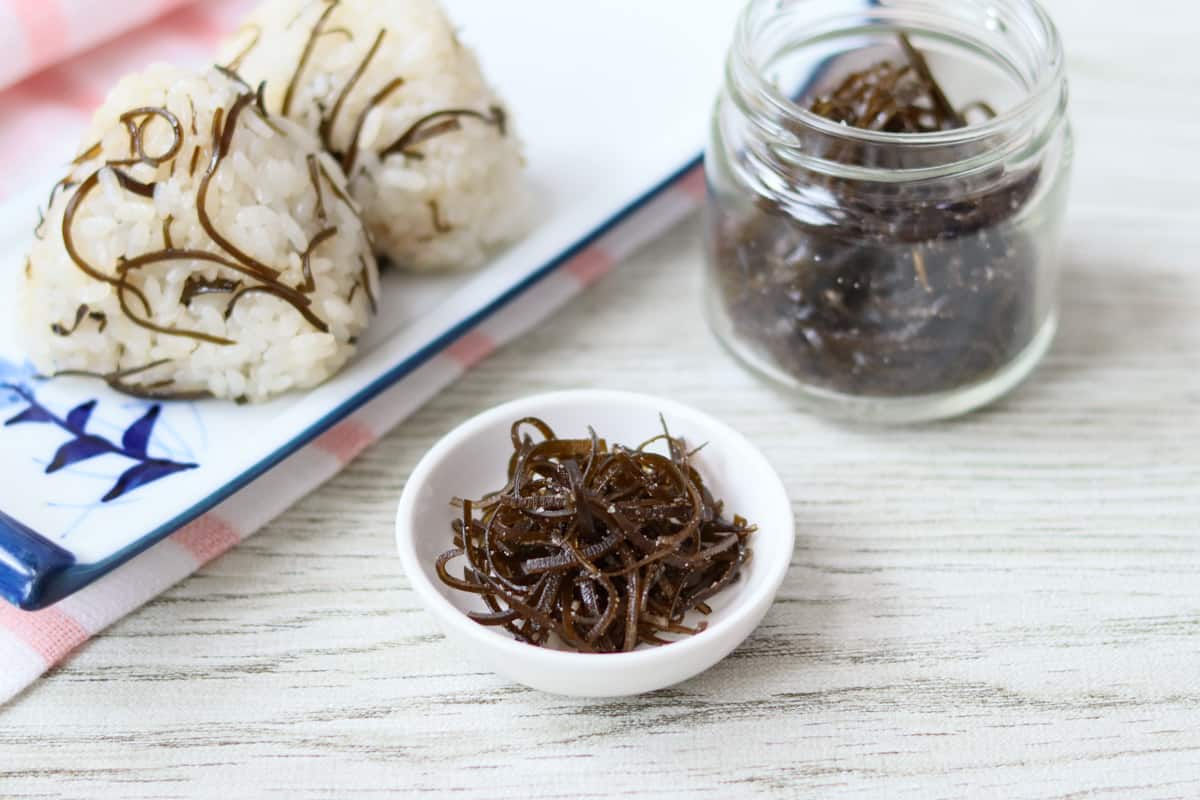
📋Step-by-step recipe
Ingredients
- 2.7 oz kombu (kelp) used to prepare dashi (Equivalent to approximately 0.53 oz/15 g of dried kombu before making dashi.)
Seasonings:
- 1 tsp mirin
- ½ tsp sugar
- 1 tsp rice vinegar
- 1 Tbsp soy sauce
Finishing touch seasonings:
- 1 tsp salt (fine or powdered)
- ½ tsp sugar (fine or powdered)
Instructions
🕒 Total: 9 hrs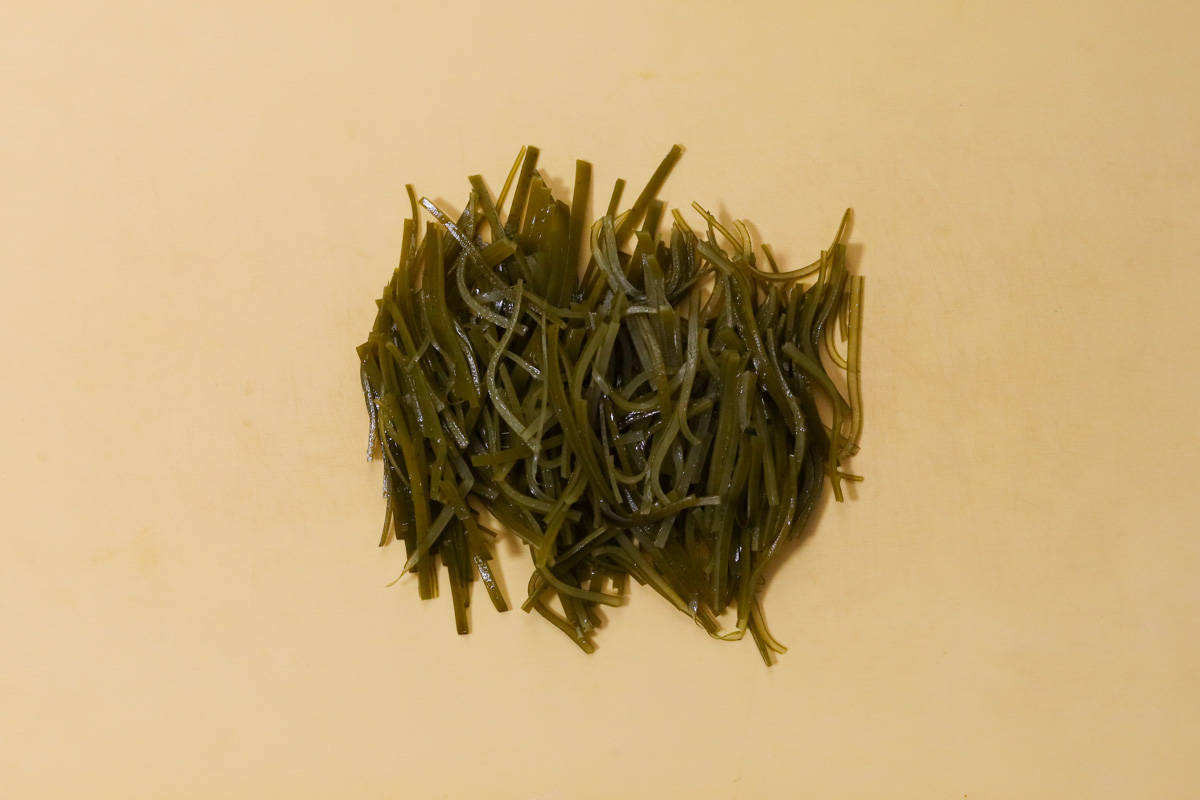
Step 1
Rinse kombu under running water to reduce some of its sliminess (it will not completely come off). Cut the kombu into pieces less than 2-inches (5 cm) wide, and then slice it into long, very thin strips.
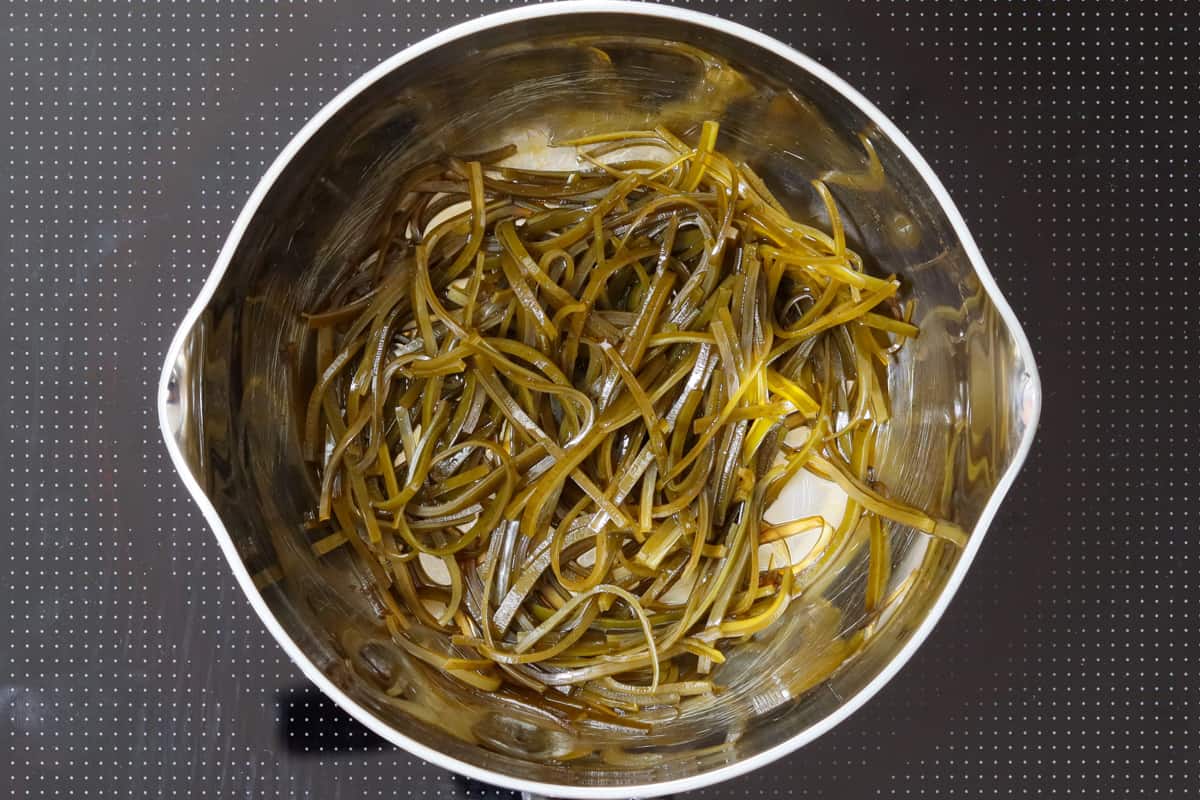
Step 2
Put the kombu and seasonings (mirin, sugar, rice vinegar, and soy sauce) in a pot. Cook over low heat while stirring to prevent burning, until almost all the seasoning liquid is absorbed.
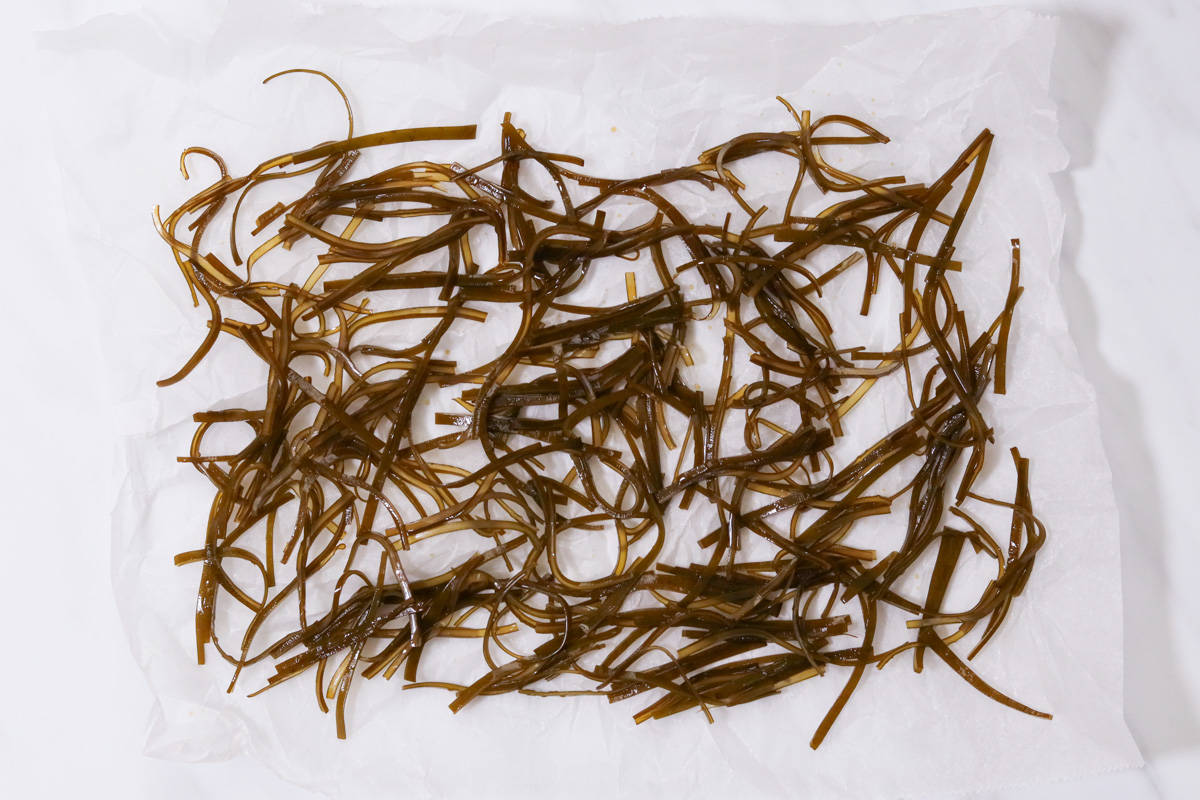
Step 3
Crumple parchment paper and spread it out, then place the kombu on top without overlapping as much as possible. Bake it in the oven (or toaster oven) at 212℉ (100℃) for 30 minutes without preheating, until the kombu reaches a semi-dry state.
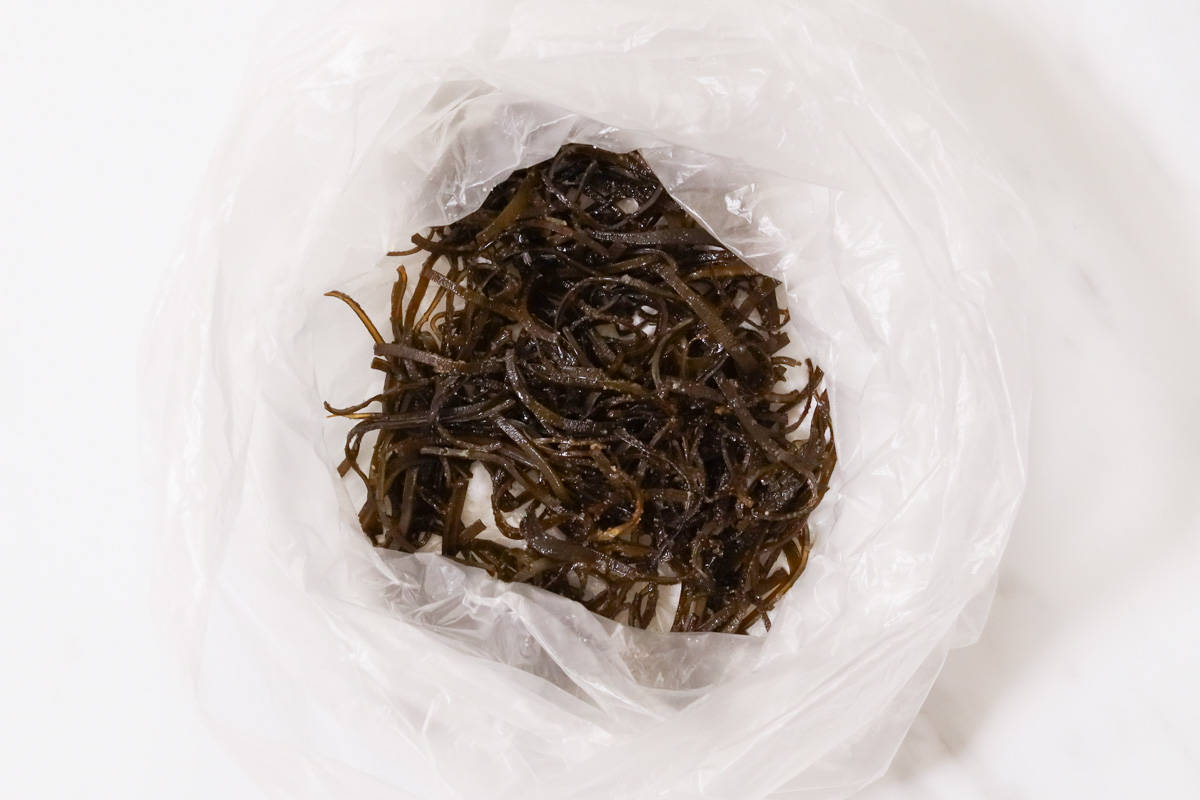
Step 4
Remove the kombu from the oven and let it cool. Once cooled, put it in a plastic bag along with salt and sugar for finishing touches, and mix well. Leave it at room temperature to allow the flavors to blend for at least 8 hours.
To store
You can keep it in an airtight container at room temperature for up to 2 weeks. Avoid storing it in the refrigerator, as it will absorb moisture.
Tips on how to make
- Crumple parchment paper before using it. This helps prevent kombu from sticking to the paper and improves ventilation.
- After the kombu has cooled, sprinkle salt and sugar over it. Sprinkling while the kombu is still warm may cause it to become sticky due to the sugar.
If you try this recipe, I’d love to hear what you think. Please consider leaving a review and star rating in the comments below. If you enjoyed it, I’d really appreciate it if you shared it with your friends.
Recipe card
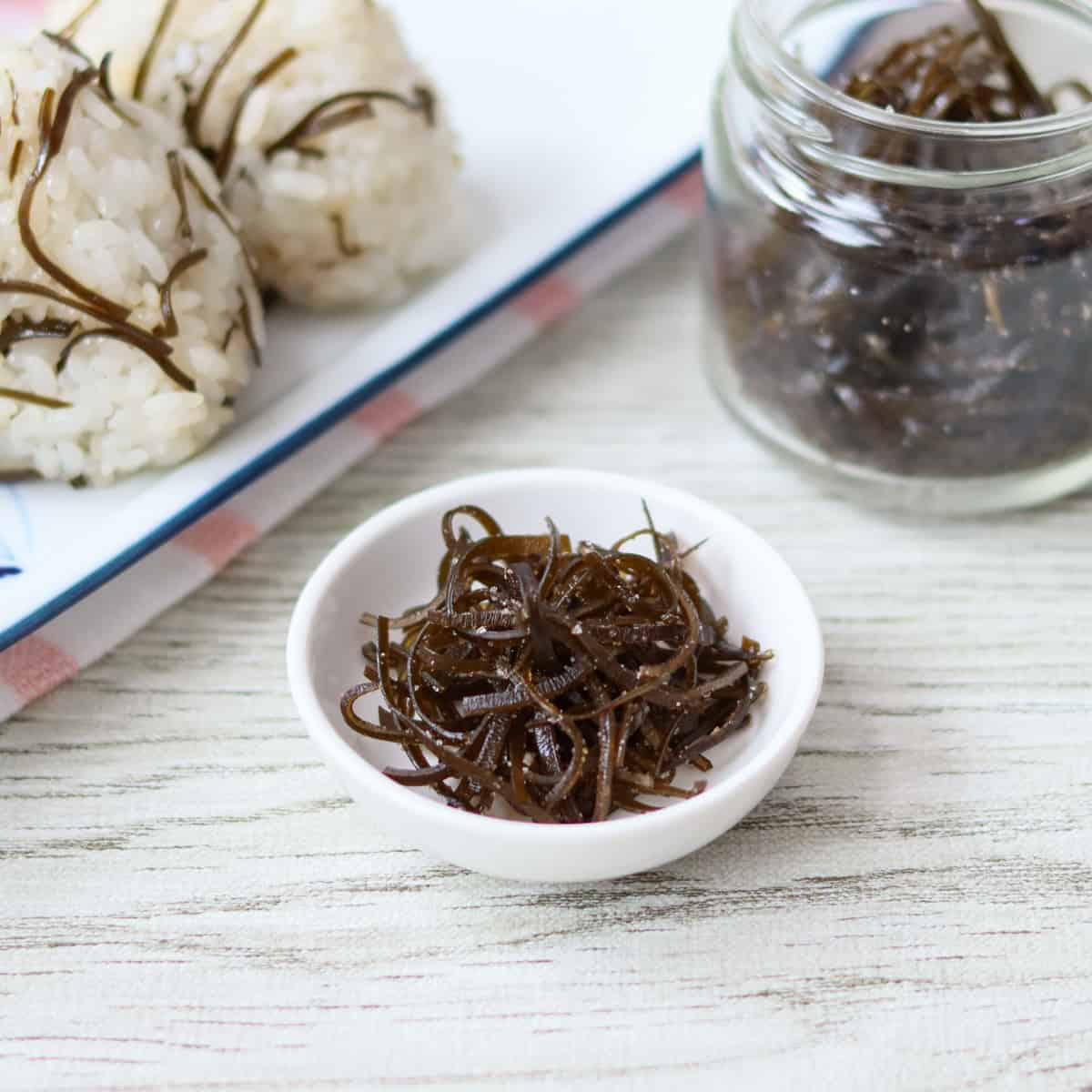
How to Make Shio Kombu (Salted Kelp)
Ingredients
- 2.7 oz kombu (kelp) used to prepare dashi (Equivalent to approximately 0.53 oz/15 g of dried kombu before making dashi.)
Seasonings:
- 1 tsp mirin
- ½ tsp sugar
- 1 tsp rice vinegar
- 1 Tbsp soy sauce
Finishing touch seasonings:
- 1 tsp salt (fine or powdered)
- ½ tsp sugar (fine or powdered)
Instructions
- Rinse kombu under running water to reduce some of its sliminess (it will not completely come off). Cut the kombu into pieces less than 2-inches (5 cm) wide, and then slice it into long, very thin strips.
- Put the kombu and seasonings (mirin, sugar, rice vinegar, and soy sauce) in a pot. Cook over low heat while stirring to prevent burning, until almost all the seasoning liquid is absorbed.
- Crumple parchment paper and spread it out, then place the kombu on top without overlapping as much as possible. Bake it in the oven (or toaster oven) at 212℉ (100℃) for 30 minutes without preheating, until the kombu reaches a semi-dry state.
- Remove the kombu from the oven and let it cool. Once cooled, put it in a plastic bag along with powdery salt and sugar for finishing touches, and mix well. Leave it at room temperature to allow the flavors to blend for at least 8 hours.
Notes
- You can keep it in an airtight container at room temperature for up to 2 weeks. Avoid storing it in the refrigerator, as it will absorb moisture.

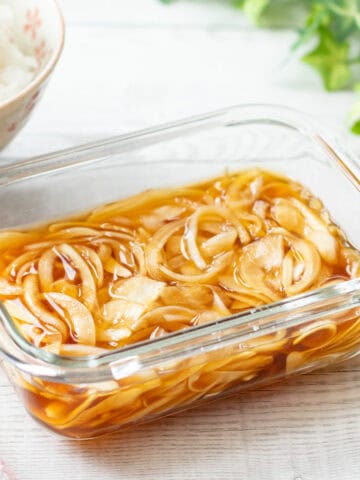
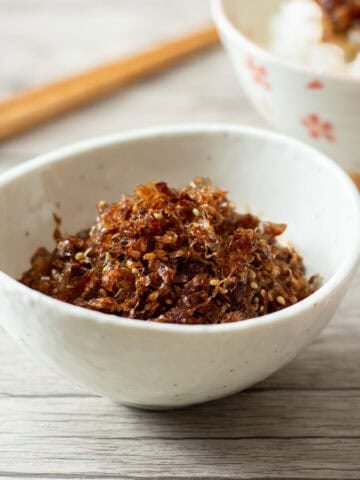
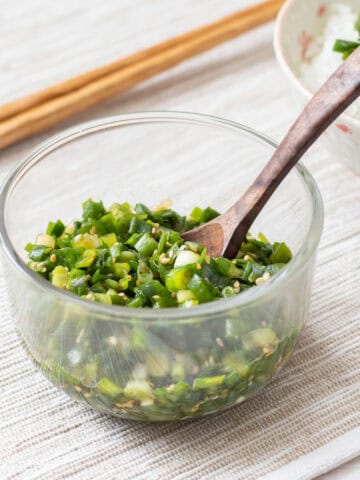
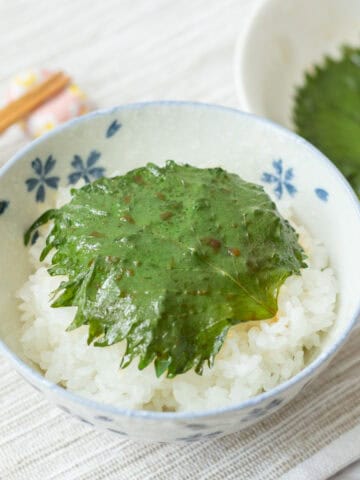
Leave a Rating and a Comment